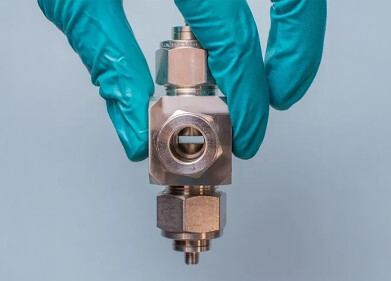Analytical Instrumentation
Mind the Gap Between Kinematic Viscosity at -20 °C and the Freezing Point
Nov 24 2015
Current aviation fuel specifications require a low-temperature viscosity measurement and a freezing point test to determine the safe operating zone of the product. But what really happens between -20°C and the freezing point? The viscosity undoubtedly increases, but does it increase beyond the safe operation limit of the aircraft?
Stabinger Viscometer: ASTM has released only one test method for jet fuel viscosity alternative to the original D445: that is D7042 “Standard Test Method for Dynamic Viscosity and Density of Liquids by Stabinger Viscometer (and the Calculation of Kinematic Viscosity)”. In interlaboratory studies guided by ASTM, Anton Paar’s (Austria) Stabinger Viscometer has undergone the stringent testing required for aviation fuel certification for both the traditional petroleum-based jet fuels according to D1655 as well as for aviation turbine fuels containing synthesized hydrocarbons according to D7566.
In addition to the standard tests, the Stabinger Viscometer offers a new comprehensive performance test for jet fuels: a temperature scan over the entire relevant temperature range from -20 °C down to -56 °C, well below the freezing point requirement of aviation fuel A1. And best of all, this scan is fast: it only takes approximately the same time as a single conventional manual test at -20 °C and is fully automated.
Digital Edition
PIN 25.5 Oct/Nov 2024
November 2024
Analytical Instrumentation - Picturing Viscosity – How Can a Viscometer or a Rheometer Benefit You? - Sustainable Grease Formulations: Evaluating Key Performance Parameters and Testing Method...
View all digital editions
Events
Nov 27 2024 Istanbul, Turkey
Biogas Convention & Trade Fair 2024
Nov 27 2024 Hanover, Germany
Dec 03 2024 Dusseldorf, Germany
Dec 08 2024 Anaheim, CA, USA
Turkey & Black Sea Oil and Gas
Dec 11 2024 Istanbul, Turkey



















